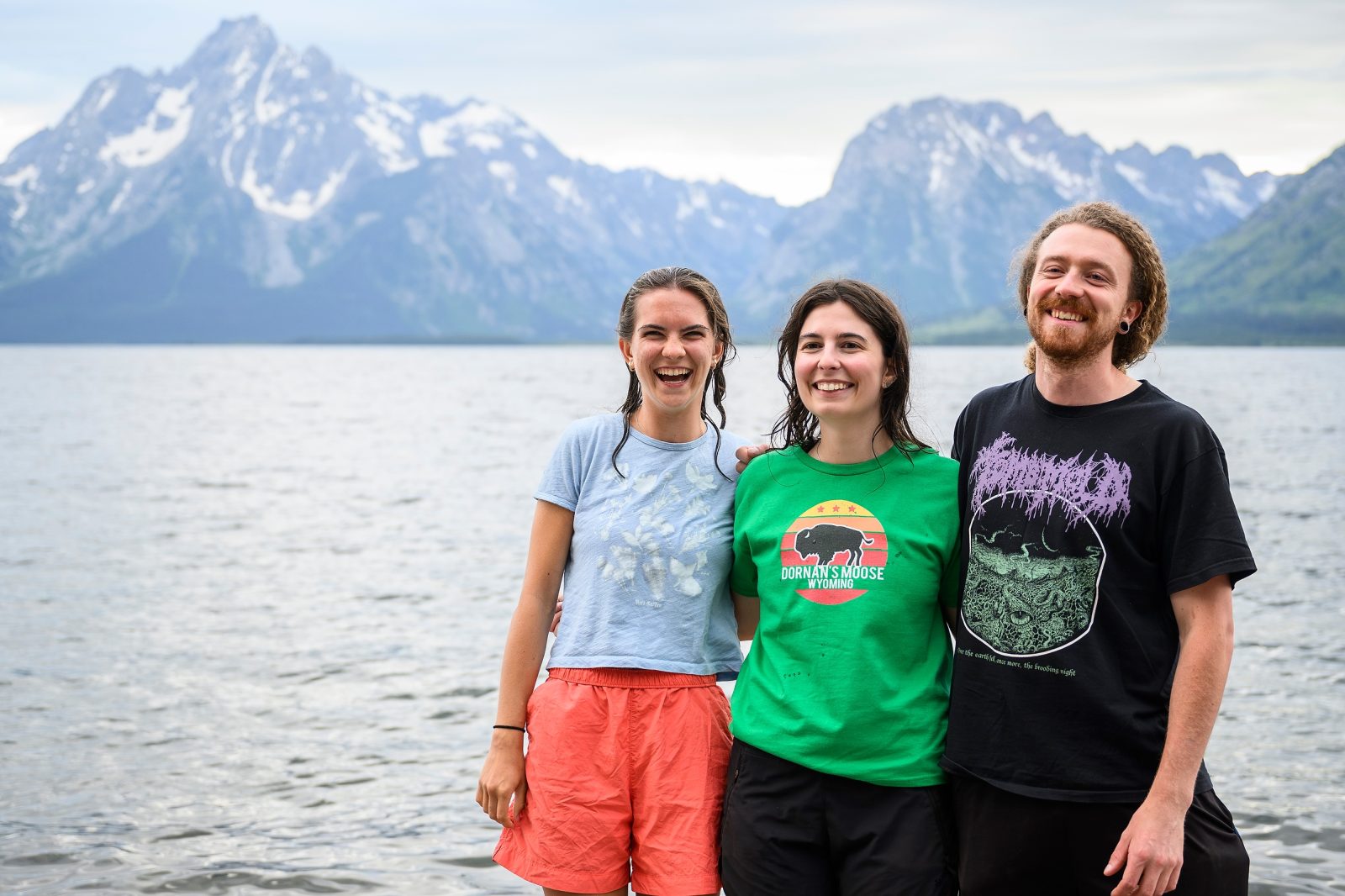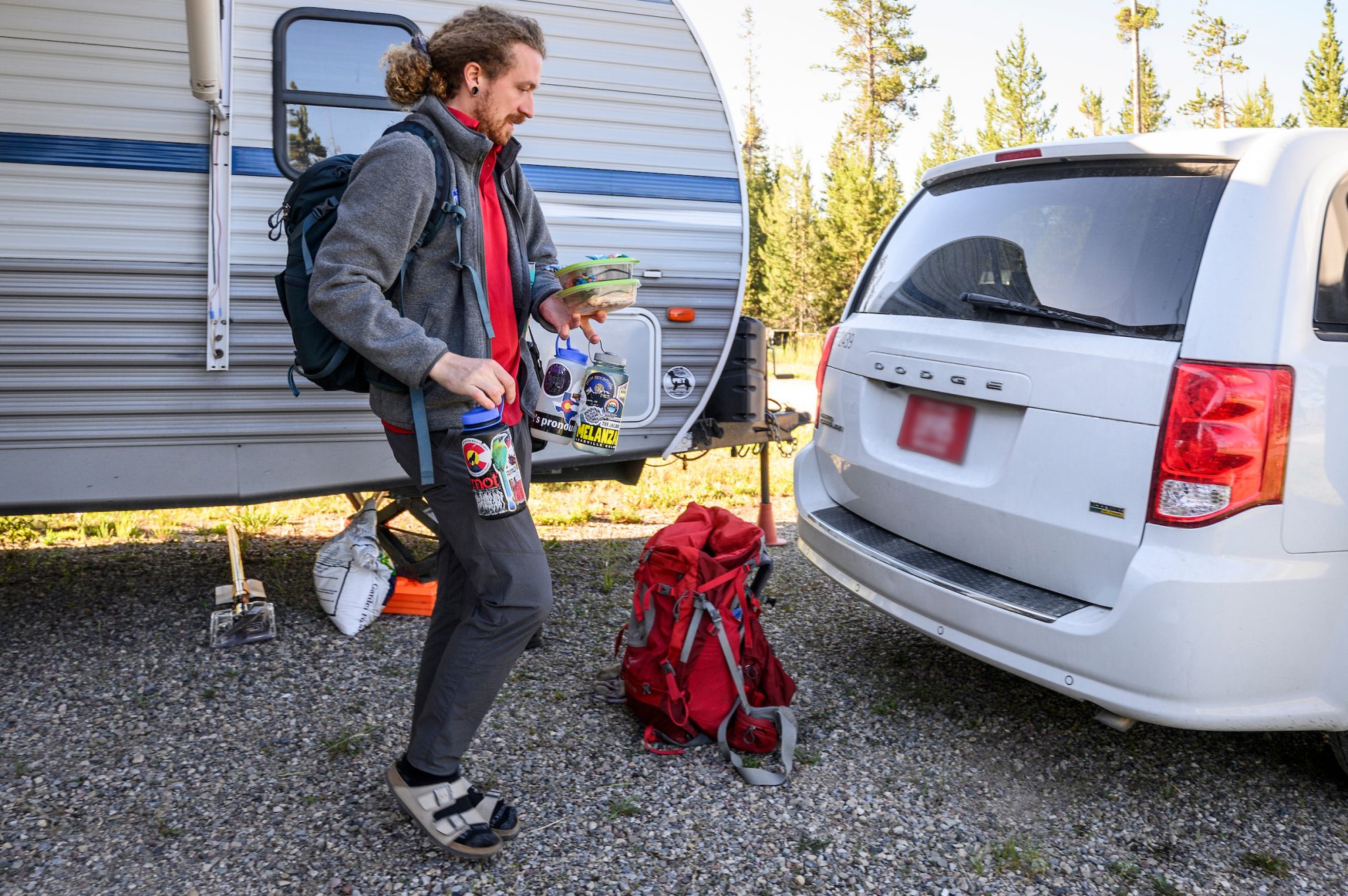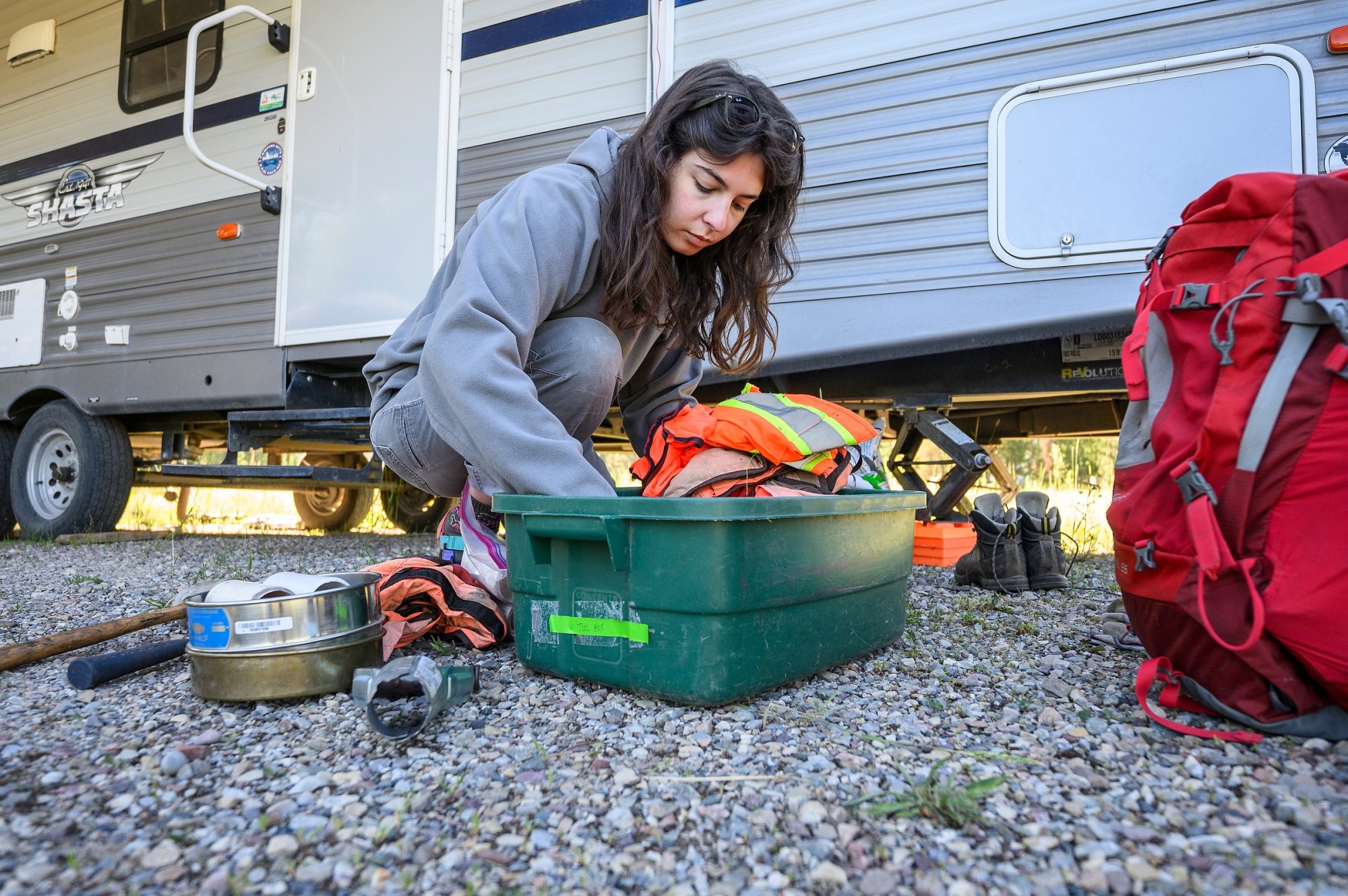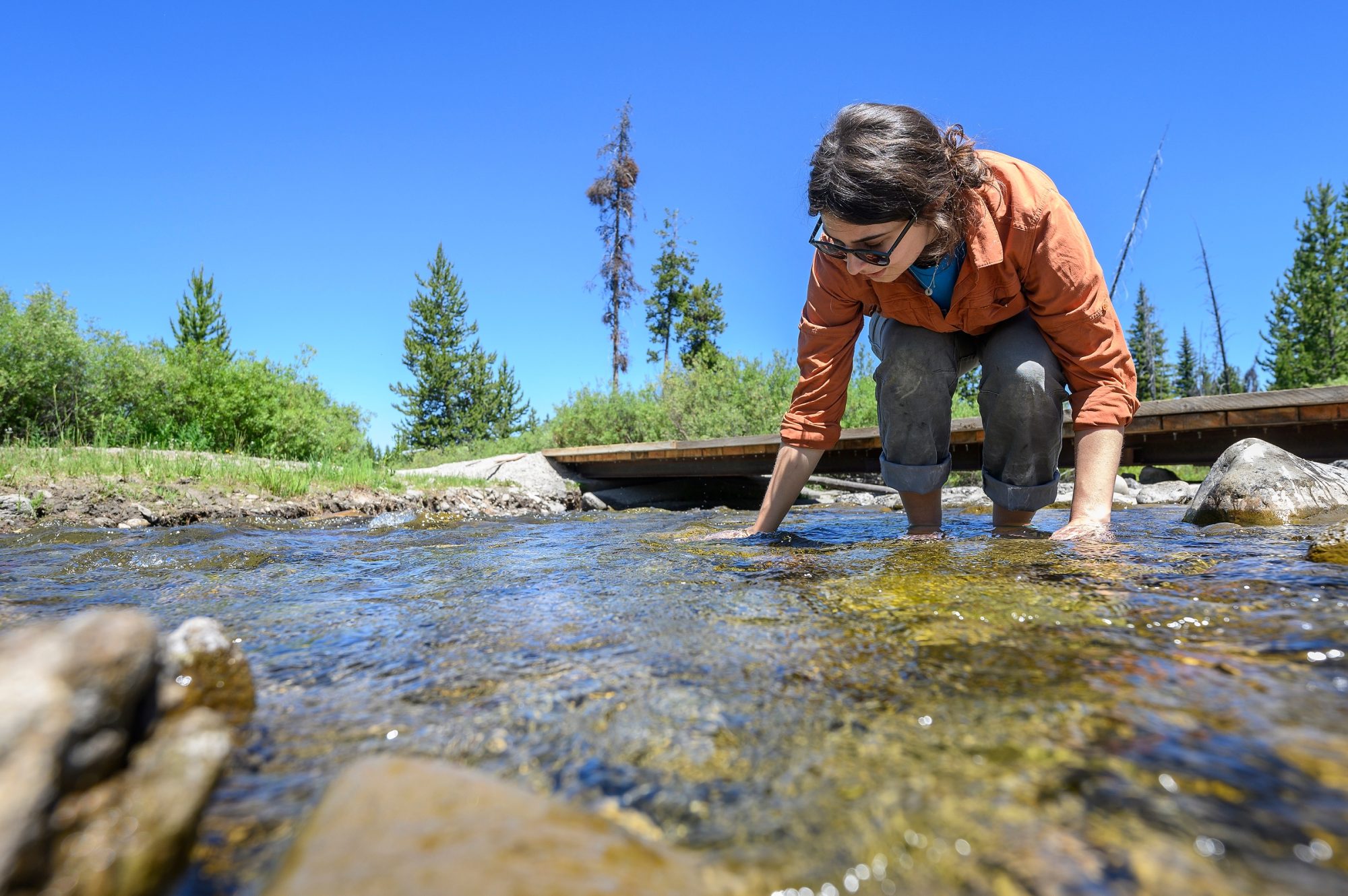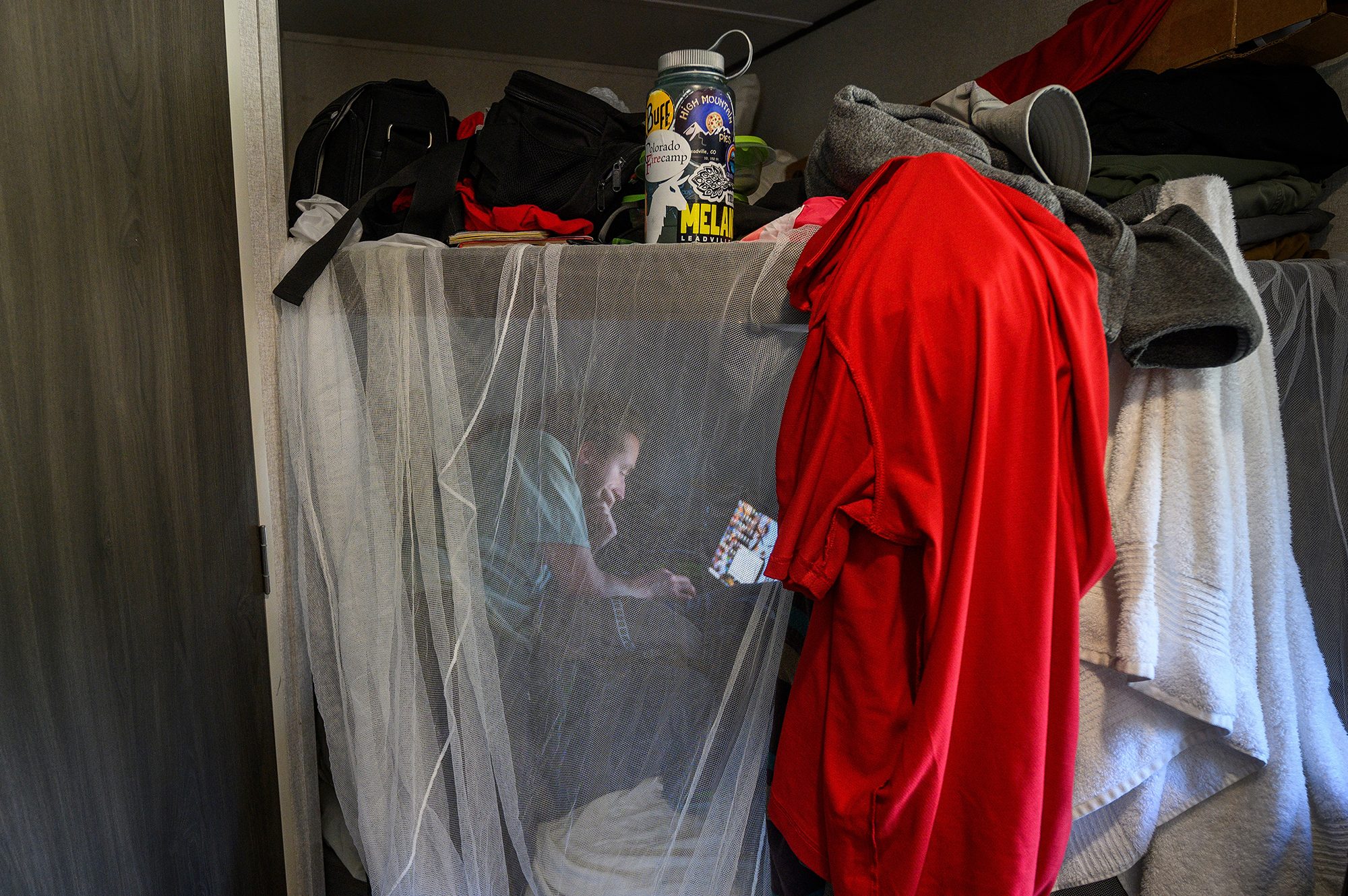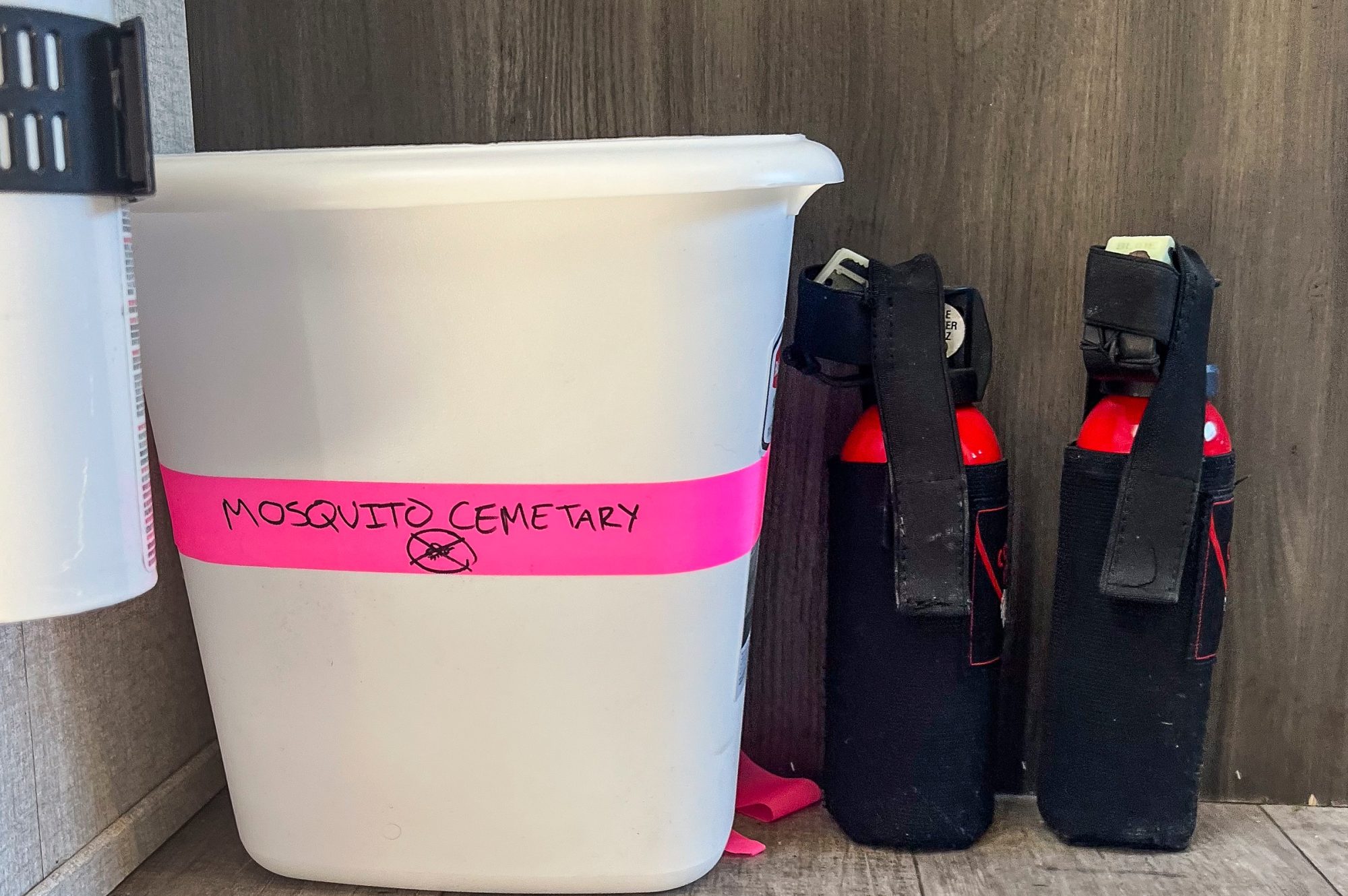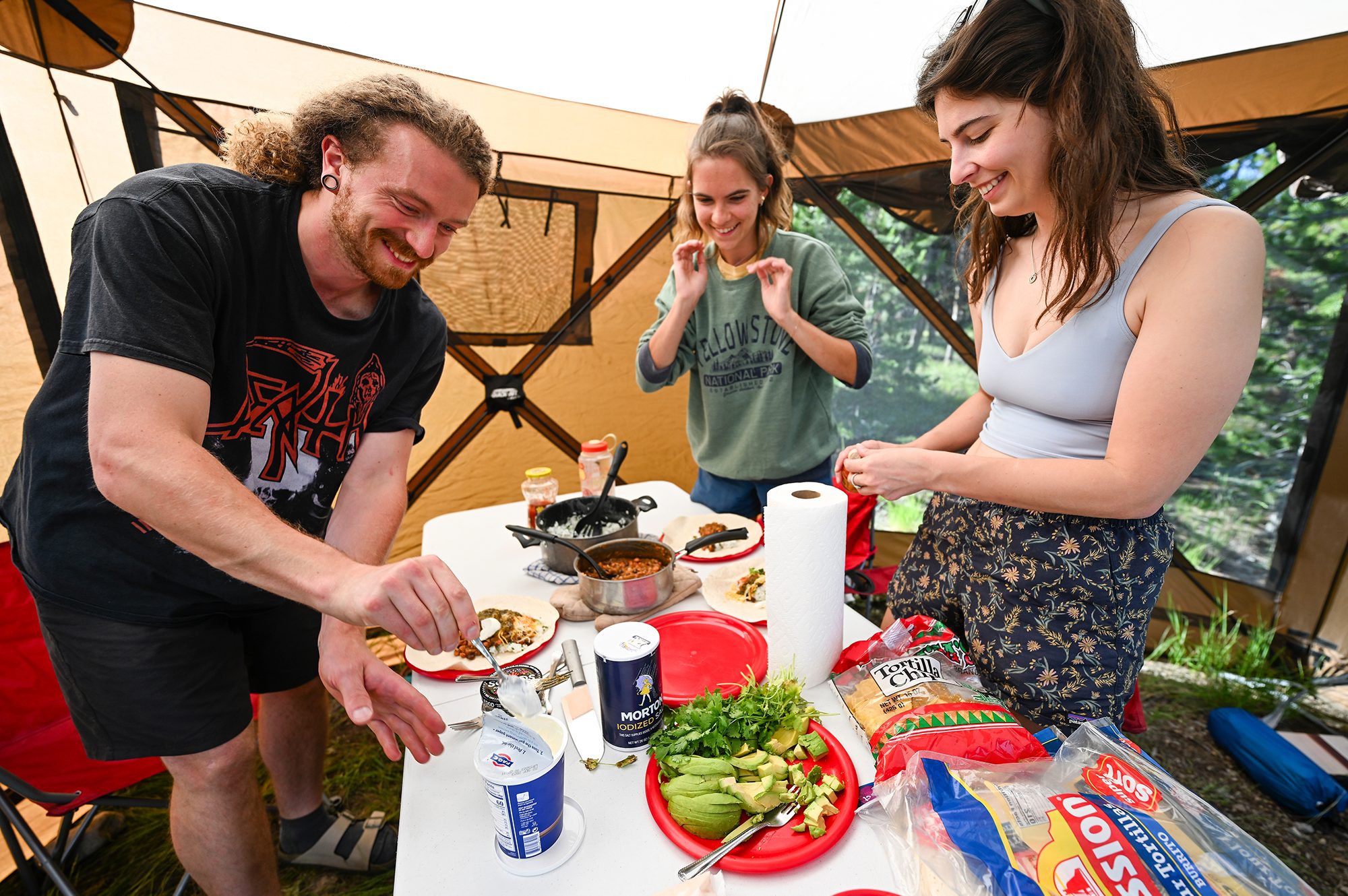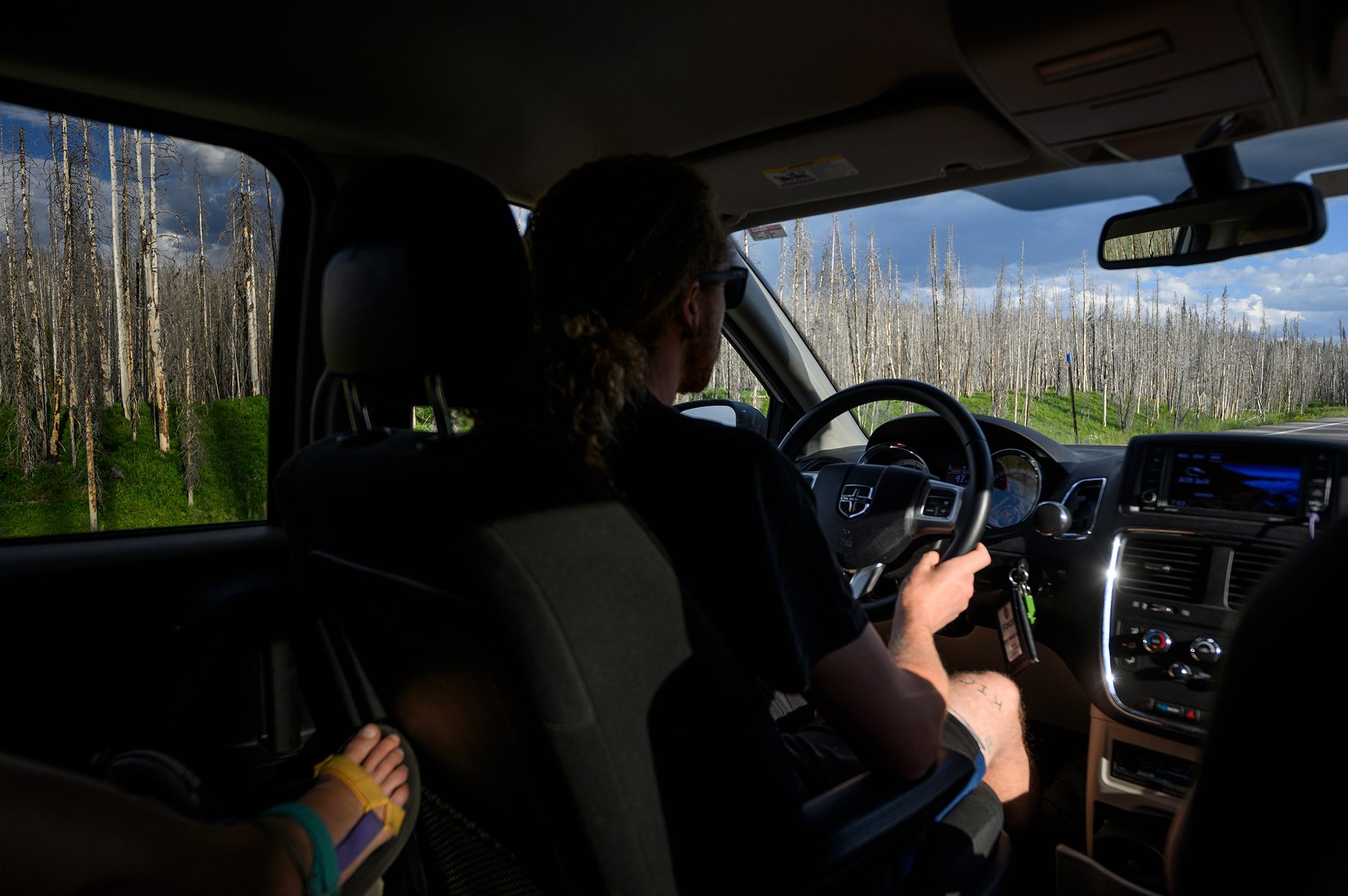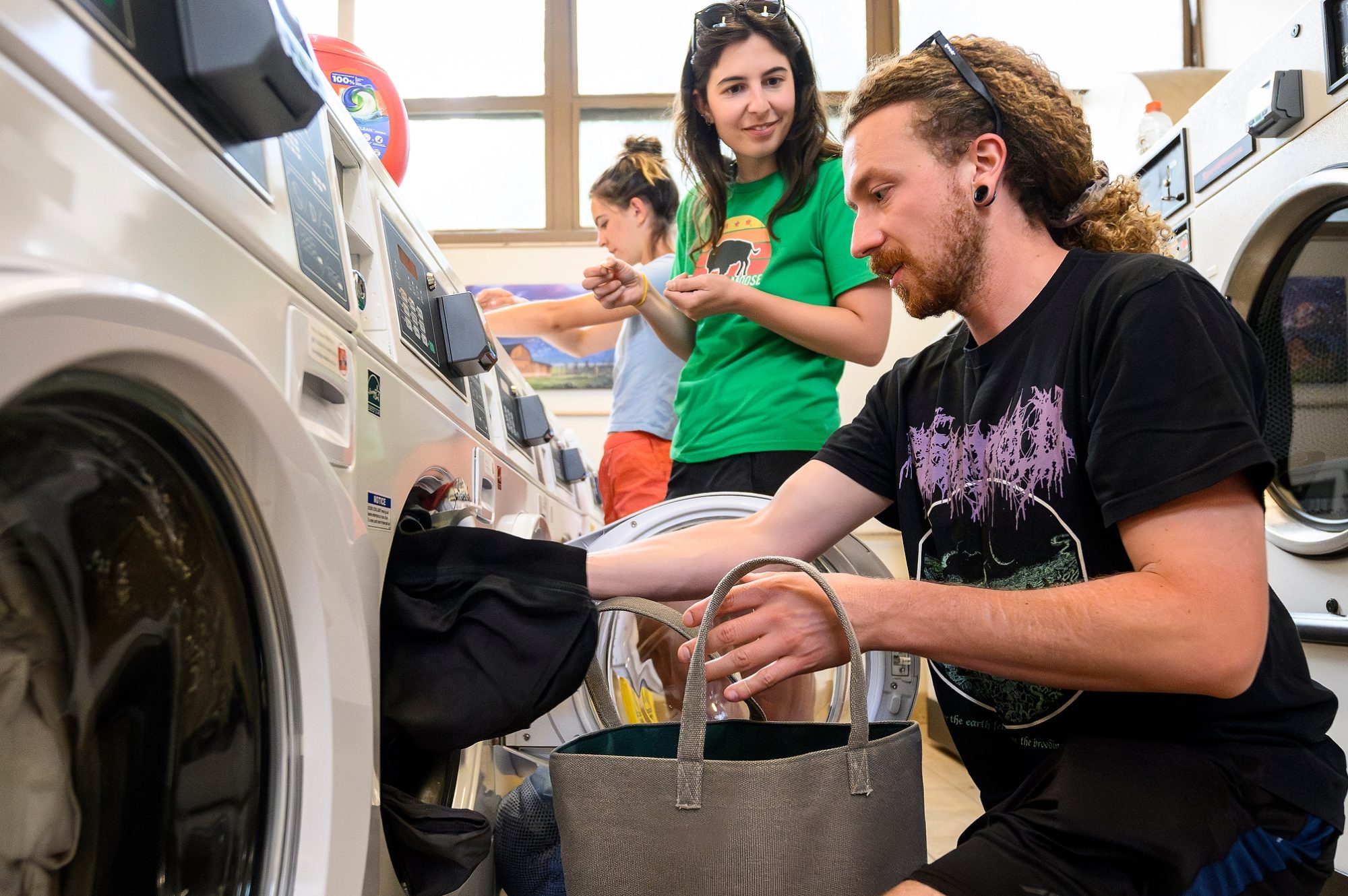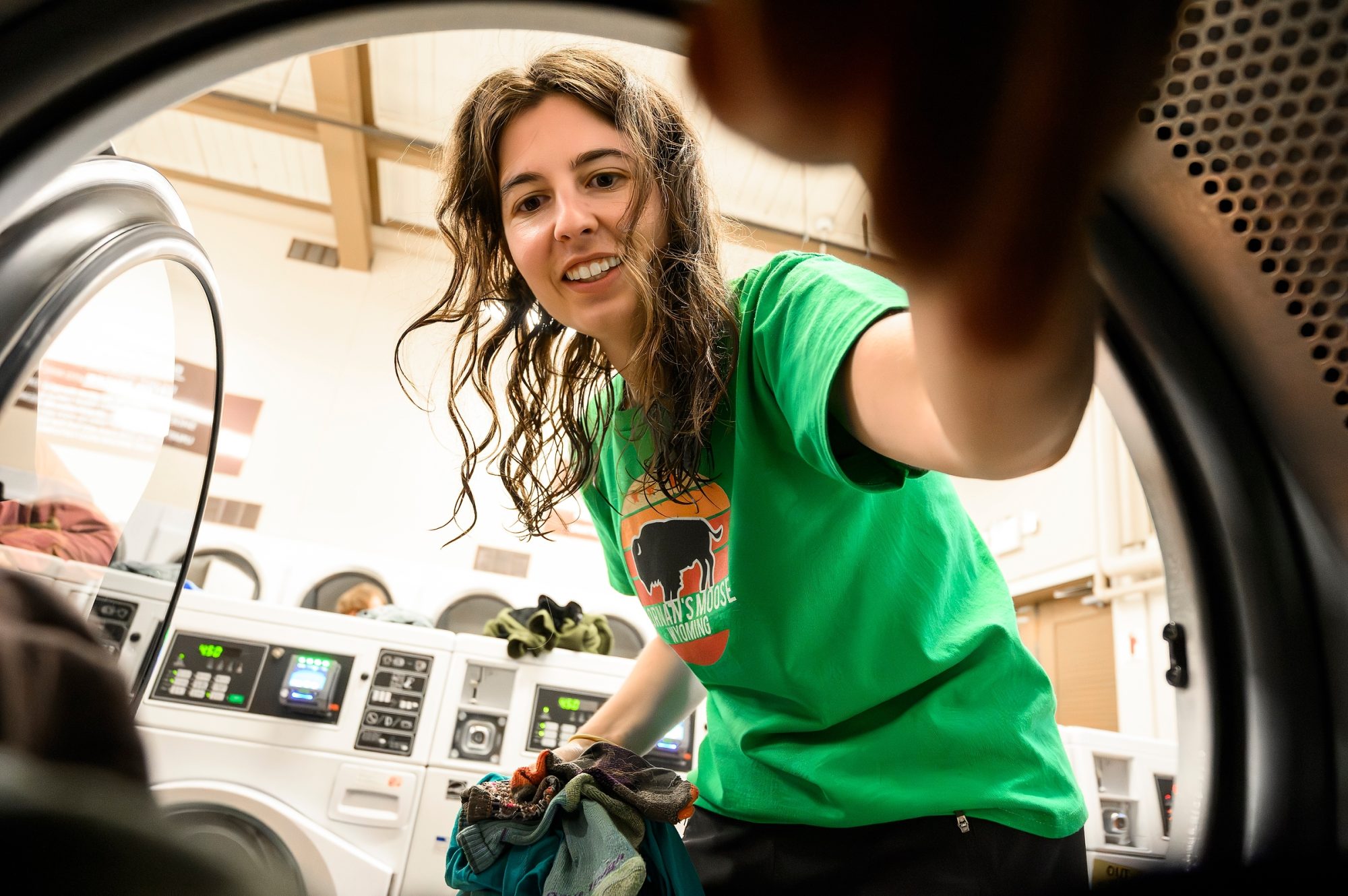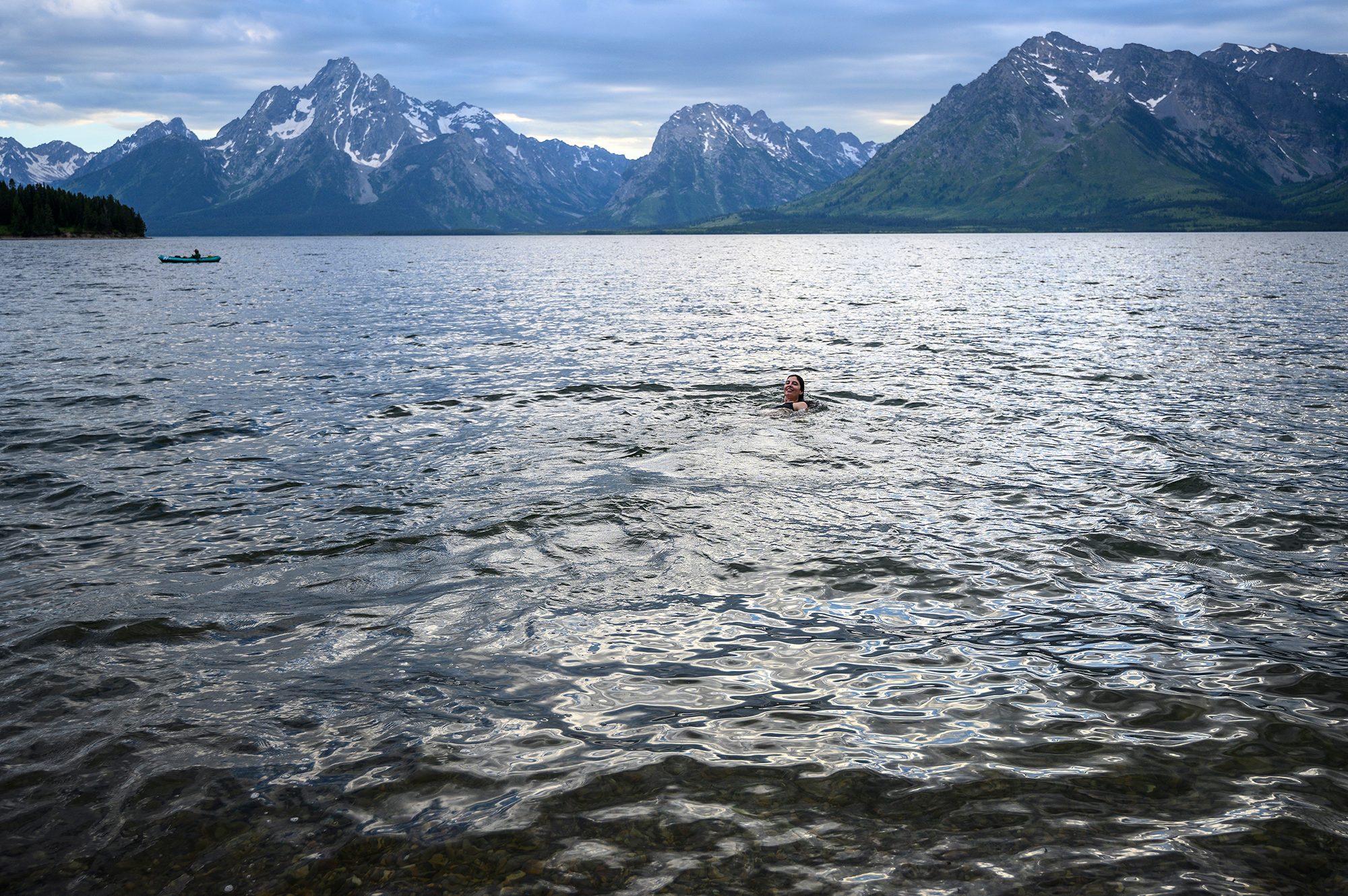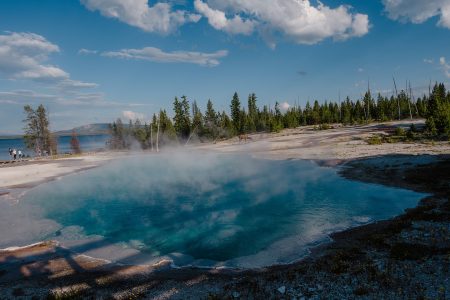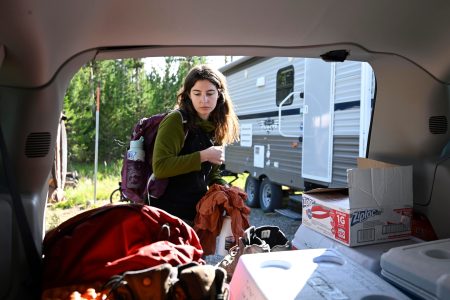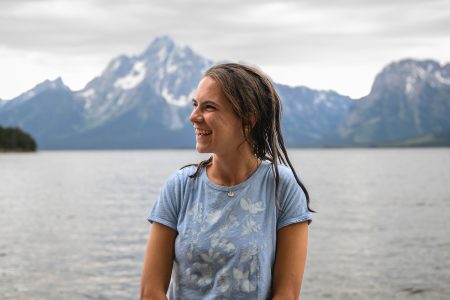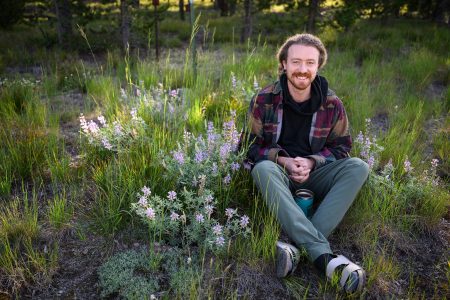The graduate students make their home base in a camper that can move with them over the course of the field season. Before heading out for a day surveying park visitors, Timon packs lunches and plenty of water to stay hydrated at high altitude.
It’s early in the morning, and Arielle is deciding which equipment to carry with her into the woods. Her backpack will hold the water, food, research equipment, laptop and bear spray she needs to stay safe and complete the day’s data collection.
The sun feels very warm at altitude, especially while hiking and carrying gear for a summer field season. After spending the morning trekking through forests gathering data from research plots in areas burned and affected by the 1988 Huck Fire, Arielle cools off in Sheffield Creek.
Timon’s home-sweet-home during the field season is this bunk bed nest. The graduate students live in close quarters in the camper, and a veil of mosquito netting keeps sleeping spaces comfortable. The mosquitos can be especially persistent in the parks, even though the students try to minimize how long the camper door is open.
Cans of bear spray and a trash can for fallen mosquitoes sit next to the trailer’s front door. The researchers are well practiced at darting in and out of the camper quickly, especially in the evenings, when a haze of mosquitoes descends on the campground.
Dinner is a shared endeavor. Timon, Lucy and Arielle take turns cooking and cleaning up. Sitting down together for meals builds camaraderie and is a nice touch point amid everyone’s busy days.
After dinner, it’s time to take care of laundry. The students load up the van and drive a half hour to the laundromat in Colter Bay on the shores of Jackson Lake in Grand Teton National Park.
Timon, Arielle and Lucy start loading their clothes into washers as other park visitors wait for their wash and dry cycles to finish. The students’ routine chores reveal the more mundane side of living and working in the parks.
But the researchers have learned how to make the most of laundry day. A quiet excitement starts to build as they load their clothes into the machines. That’s because they know just how to pass the time during wash and dry cycles. Colter Bay offers the perfect opportunity to enjoy another unique feature of the Greater Yellowstone Ecosystem: an alpine lake.
“I’m happiest when I’m swimming,” says Arielle. With the Teton Range as a backdrop, Arielle enjoys the chilly water of Jackson Lake. Lucy eventually jumps in, too, while further down the shoreline, Timon skips rocks across the surface of the lake.
While the dirt and sweat from the work clothes they wear conducting research in the field wash out in the laundry, the three young scientists indulge in their own quiet moments surrounded by the beauty that inspires them to study this unique ecosystem.
“I’m happiest when I’m swimming,” says Arielle. With the Teton Range as a backdrop, Arielle enjoys the chilly water of Jackson Lake. Lucy eventually jumps in, too, while further down the shoreline, Timon skips rocks across the surface of the lake. While the dirt and sweat from the work clothes they wear conducting research in the field wash out in the laundry, the three young scientists indulge in their own quiet moments surrounded by the beauty that inspires them to study this unique ecosystem.
